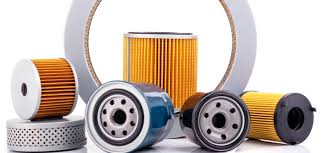Hydraulic systems are the lifeblood of heavy machinery and equipment, ensuring their smooth operation and efficiency. To maintain these systems, it’s crucial to replace filter elements when needed. However, finding the right filter element can be challenging due to the variety of brands and models available. This is where hydraulic filter elements cross reference comes into play. In this article, we’ll dive into the importance of cross-referencing, how it works, and why it’s essential for maintaining your hydraulic systems.
The Significance of Cross-Referencing
The Filter Element Puzzle
Hydraulic filters come in different shapes, sizes, and specifications. Each manufacturer produces filter elements designed to fit their equipment. This variety can make it difficult for equipment operators and maintenance personnel to find the exact filter element they need. This is where cross-referencing becomes invaluable.
Cross-Reference Explained
Cross-referencing is the process of matching a filter element from one manufacturer to an equivalent or compatible filter element from another manufacturer. It involves a thorough analysis of specifications, dimensions, and performance characteristics. This ensures that the replacement filter element is a suitable match for the original, even if it’s from a different brand.
How Cross-Referencing Works
Identifying Key Specifications
To successfully cross-reference a filter element, you’ll need to identify key specifications, including:
1. Filter Dimensions
Measure the length, outer diameter, and inner diameter of the existing filter element. These dimensions are crucial in finding an equivalent replacement.
2. Micron Rating
Determine the micron rating of the current filter. This rating indicates the filter’s efficiency in capturing particles of a specific size.
3. Filtration Media
Check the type of filtration media used in the filter element. Some filters use cellulose, while others employ synthetic materials.
4. Pressure Rating
Note the filter’s pressure rating, as this determines its ability to withstand the hydraulic system’s pressure.
Using Cross-Reference Guides
Many filter manufacturers provide cross-reference guides or online tools to assist in finding equivalent filter elements. These resources simplify the process by matching the key specifications of your existing filter with those of other brands.
Consulting with Experts
When in doubt, it’s advisable to consult with hydraulic system experts or filter suppliers who can help you find the right replacement filter element.
Why Cross-Referencing is Essential
Avoiding Downtime
Choosing the correct filter element through cross reference prevents downtime caused by waiting for the exact replacement. This is crucial for industries where equipment uptime is paramount.
Cost-Efficiency
Cross-referencing allows you to explore filter options from various manufacturers, potentially leading to cost savings without compromising quality.
Expanding Replacement Options
By cross-referencing, you open the door to a broader range of filter element options, ensuring you can always find a suitable replacement.
Conclusion
In the world of heavy machinery and hydraulic systems, maintaining efficiency and minimizing downtime is of the utmost importance. Hydraulic filter element cross reference simplifies the process of finding the right replacement filter, ensuring that your equipment continues to operate smoothly. With a solid understanding of your filter’s specifications and access to cross-reference resources, you can keep your machinery in top shape without the hassle of hunting for the exact filter element. Make the smart choice, choose cross-referencing, and keep your hydraulic systems running at their best.


